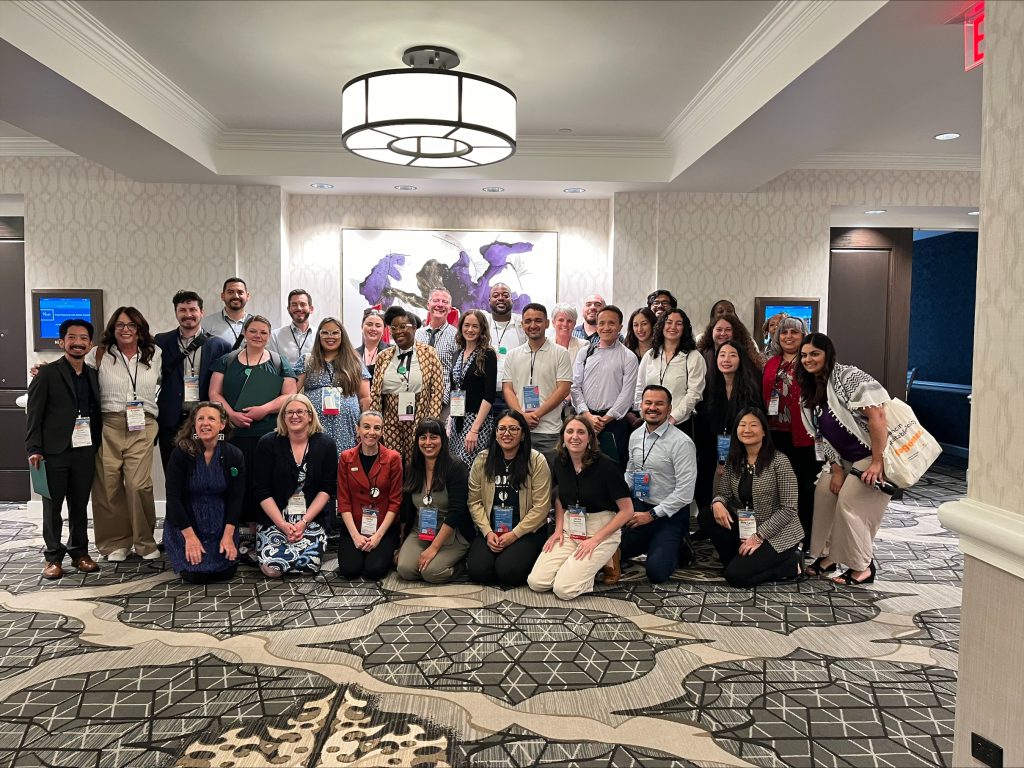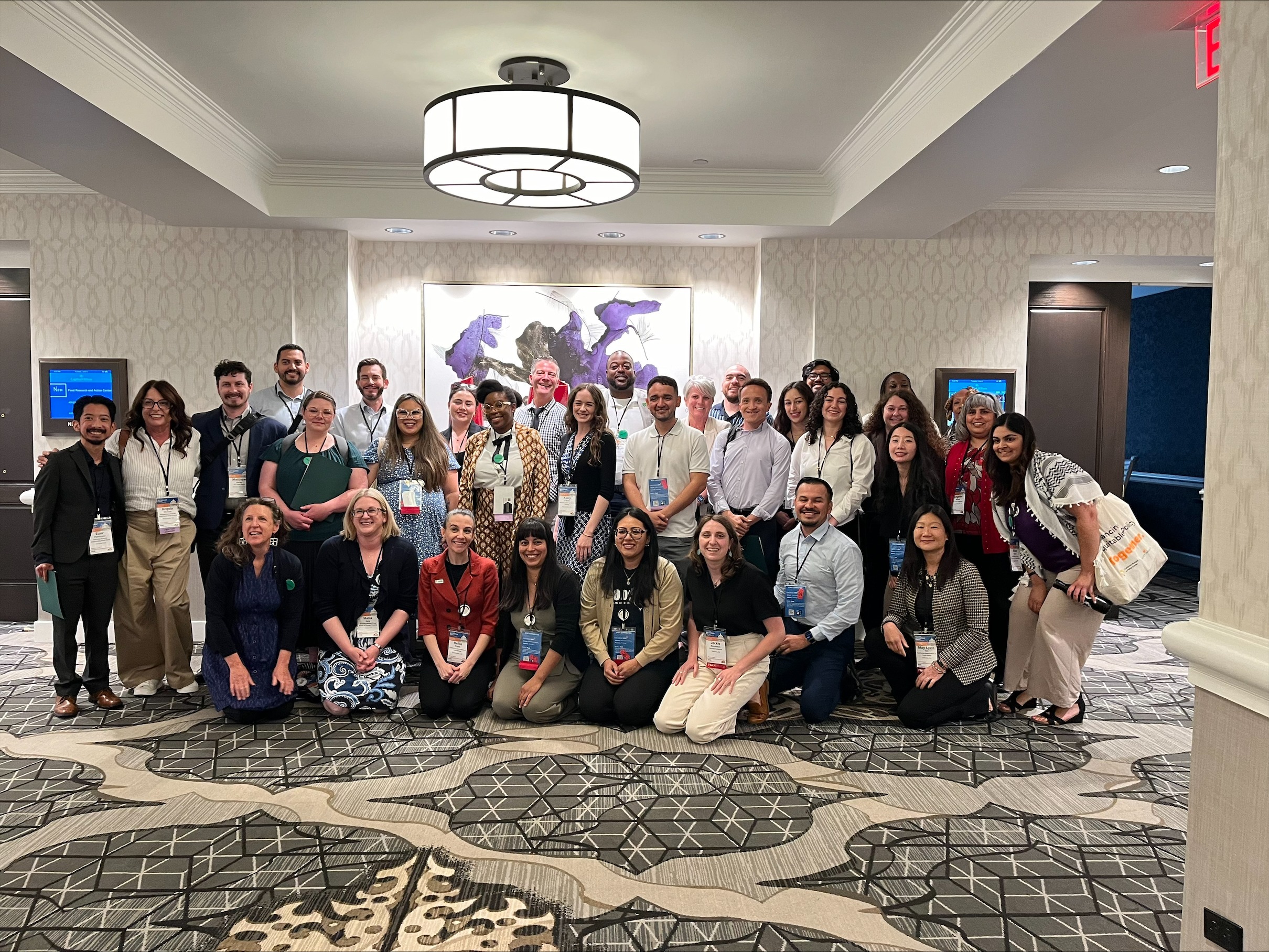Brandi Simonaro on the Number One Takeaway From the 2024 Anti-Hunger Policy Conference in D.C.

Each year the National Anti-Hunger Policy Conference serves as a space for program implementers and advocates from across the country to connect on hunger-related issues and possible solutions. Held in Washington D.C. and hosted by the Food Resource & Action Center (FRAC), I had the honor to attend as a representative for Center for Healthy Communities (CHC). As we moved through sessions about policy, research and programming, a driving theme emerged – the importance of protecting the food choice freedom of individuals who use the Supplemental Nutrition Assistance Program (SNAP, also known as CalFresh Food in California).
What is SNAP and How Does it Impact Food Choice Freedom?
SNAP (known in California as CalFresh Food), exists to provide qualifying low-income individuals financial support for the purchase of groceries. Benefits cannot be used to purchase tobacco, alcohol, nonfood items and hot or prepared foods (except in some areas under certain conditions).
While these known limitations are obvious, some have argued for policy change to include the ban of purchase for certain types of food. One approach suggests limiting or banning items such as “snack foods” or “processed goods” from purchase with these benefits. Another aims to broadly restrict the purchase of “unhealthy foods,” including sodas and sugary drinks. A third suggests banning the purchase of certain “luxury foods” such as high-end cuts of meat, seafood or gourmet items. Implementing these restrictions is challenging due to the difficulties in deciding which items should be included in the ban. These all, in effect, would control dietary choices of recipients.
As someone who utilized the SNAP (CalFresh Food) program during college, I left the conference with a renewed sense of the importance to advocate for the protection of SNAP users’ freedom to choose the types of food they can purchase with these monthly food assistance funds.
4 Reasons Why We Should Protect Food Choice Freedom
- The Right for Recipients to Maintain Dignity & Autonomy
Advocates with lived experiences shared that restricting the types of food that can be purchased with SNAP benefits undermines the autonomy and dignity of recipients. Everyone should have the freedom to make their own dietary choices and decisions, just as those not accessing the program do. The use of further restrictions is patronizing and stigmatizing. As one presenter put it, “It is insulting for those that have all the choice and autonomy in the world to be making rules for those that have neither.”
Everyone should have the freedom to make their own dietary choices and decisions, just as those not accessing the program do.
- The Need to Preserve Access
Many SNAP recipients live in food deserts, areas with limited access to fresh and healthy foods. Restricting the types of foods they can purchase may worsen food insecurity. This could lead to unintended consequences, such as increased hunger.
Banning certain foods could disproportionately affect low-income individuals and families who already face numerous challenges. It risks perpetuating stereotypes and biases about eating habits, contributing to further marginalization and stigmatization.
- The Ability to Increase Program Satisfaction
SNAP already includes so many hurdles to accessing benefits; the application, verifications needed, meeting additional requirements (as for students) etc. Limiting SNAP choice will only lessen program satisfaction. Balancing support with freedom of choice is crucial for the success and acceptance of any assistance program.
- The Chance to Avoid Complexity of Program and Administrative Burden
Implementing a ban on certain foods would create significant administrative challenges. Determining the foods to ban, then enforcing these restrictions requires extensive resources. This could lead to increased bureaucracy and higher operational costs for the program. This complexity could also result in confusion and frustration for both retailers and SNAP recipients.
Final Thoughts

I’ve worked in the food access space for nearly a decade. I strongly believe a more humane approach includes not limiting foods but actually expanding SNAP access and incentives however possible. This aligns with much of our CHC work in the food access space. Through nutrition education, incentive programs for purchasing foods (such as Market Match), etc. we can empower recipients to make good choices on their own. We can preserve autonomy and respect.
I am grateful that this was such an uplifted topic at the Anti-Hunger Policy Conference, as it is an important guiding light for the work that we do at CHC!
About the Author: Brandi Simonaro is the Priority Area Co-Director for Basic Needs in Higher Education and the CalFresh Food project at Center for Health Communities.
